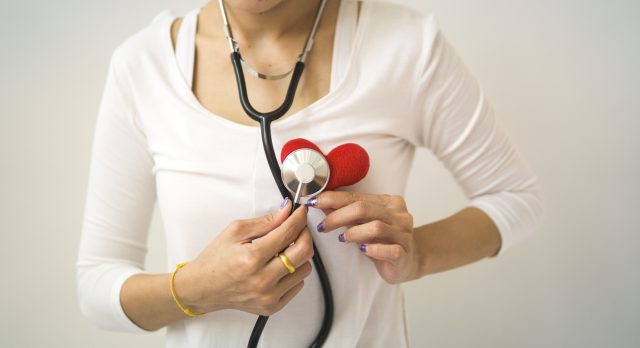
Although most of us visit a doctor or go for a medical check when we don’t feel healthy, it’s better to keep an eye on our health condition at home. The good news is that plenty of home kits are available for you to evaluate your health before going to a doctor.
For example, you can buy antigen test kits online to quickly and easily diagnose coronavirus and prevent it from spreading. Likewise, a pregnancy test strip can also help you confirm pregnancy in the early stages, so you can start taking care of your health correctly.
Furthermore, most health checks don’t even require any test kits or tools. Some helpful techniques can facilitate you in examining for a health condition to keep you healthy. Therefore, we have mentioned 7 health checks in this article that you can do at home. Read below to explore!
1. Iron Deficiency
Most women and men have iron deficiency without them even knowing. However, the overall ratio of iron deficiency is higher in women than men.
The most common symptoms of iron deficiency are weakness, extreme fatigue, shortness of breath, dizziness, and cold hands and feet. You can check for iron deficiency at home if you notice these symptoms.
What you have to do is look at your palms for pale lines. No matter your skin color, the lines on your palm are always darker than the rest of your palm. If they are pale, it usually means that there’s low blood circulation in small blood vessels, indicating iron deficiency.
Most anemic people also have brittle nails, so you should look for that and visit your general physician. They will ask you to run a few blood tests to confirm.
2. Waist Measurement
Even if you are not obese, but your waist is significant, it can lead to several health problems such as heart diseases and diabetes. Fat around your waist or in the central part of your body is called visceral fat, and it carries a higher risk of diabetes, cancer, stroke, and heart disease.
Hence, you can measure your waist from time to time to ensure optimal health. To measure your waist properly, stand straight with a bare torso and run a measuring tape around your waist just above the belly button. Just breathe normally, and don’t cinch the tape.
For men, waist measurement above 40 inches is considered high risk, and above 35 inches for women. However, these thresholds can slightly vary from one ethnicity to another, but it gives a good general idea.
If you’re in the high-risk category, exercise regularly and indulge in a healthy non-fatty diet to lose weight. You can even discuss it with your doctor for professional guidance.
3. Heart Rate
Your heart rate can tell much about your health and fitness level. If you have been noticing irregular heartbeats lately, you can check your beat per minute (bpm) at home.
A healthy heart will most likely have between 60 and 100 bpm at rest. Before you check your heart rate, you should rest for 5 minutes so it can be normal. Place your fingers on your inner wrist or under your jaw on the side of your throat and count every heartbeat for 30 seconds.
Multiply the result with 2 to get the result for an entire minute. For example, if you counted 40 heartbeats in 30 seconds, multiply it by 2, and you will get 80 bpm (40×2). Heart rate above or below the normal range or even irregular heart rate requires you to visit a doctor immediately.
4. Blood Pressure
High blood pressure can lead to heart attack, stroke, heart failure, and kidney failure. A healthy individual doesn’t need to regularly monitor their blood pressure. However, twice a year is acceptable for adults.
You can check your blood pressure using a home blood pressure monitor. The normal, healthy range is 120/80 or less. You must urgently contact your GP if you notice it consistently exceeding this rate.
5. Skin Cancer
People with light skin are at a higher risk of developing skin cancer than other skin types since less pigmentation makes it harder for the skin to protect itself from the sun. However, it doesn’t mean people with dark skin can’t get skin cancer.
Therefore, you should examine your skin every month for moles that keep changing their color, size, or even if they start bleeding. A large brownish spot or a painful lesion that burns and itches can also indicate symptoms of skin cancer.
6. Blood Sugar Levels
A normal fasting blood sugar level should be 99 mg/dL or lower. If your fasting blood sugar level is 126 mg/dL or higher, it indicates diabetes. Diabetes can cause several life-threatening health problems such as coma, stroke, heart attack, and heart failure.
A home blood glucose monitor can help you check your blood sugar levels. You have to prick your finger with an included tool and put blood on the strip, which is then supposed to be connected to the device. Within a few seconds, you can view your blood sugar levels.
7. Blood and Swab Tests
How about saving yourself a trip and the cost of going to the lab when you can do several tests in the comfort of your home? A wide variety of blood tests can be bought from your pharmacy or online such as HIV, cholesterol levels, allergies, and thyroid problems. Order a rapid hiv test kit here.
Swab test kits can identify urinary tract or bacterial throat infections. This way, you can monitor your health at home regularly, and if any of the tests come positive, it’s imperative that you book an appointment with a doctor.













